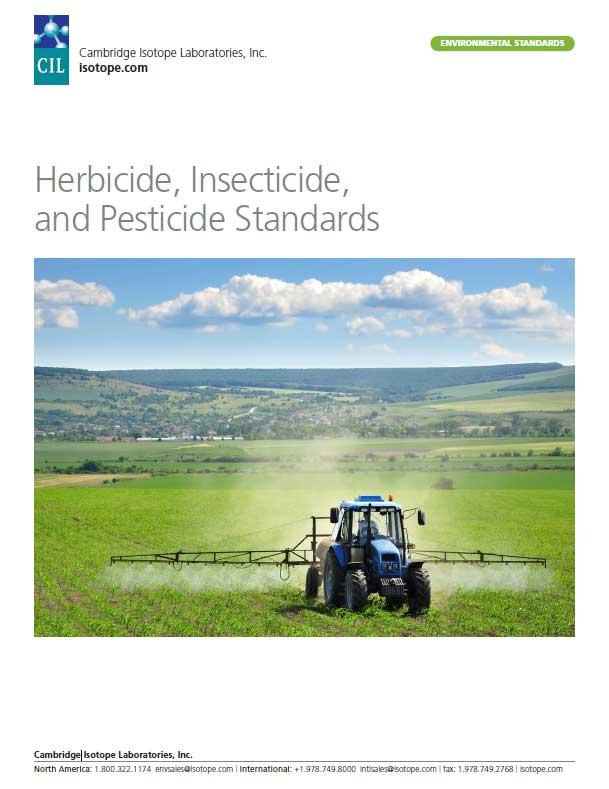We hope you enjoy this issue that highlights current topics of interest in food and beverage monitoring, including listings of CIL products to assist with related analysis. For more information about CIL’s foodomics product line, please click here, or visit our website at www.isotope.com for our complete product listings.
Welcome to the July 2022 edition of “The Standard,″ CIL's newsletter for issues related to environmental, food, water, and human exposure testing. As we recently commemorated World Food Safety Day in June 2022, we wanted to focus on the importance of monitoring the safety and quality of food and beverage products in research and testing applications. CIL offers a multitude of highly characterized stable isotope-labeled and native standards for food and beverage analysis including contaminant and impurity standards such as pesticides, PFAS, nitrosamines, bisphenols, and parabens, as well as metabolic biomolecules such as amino acids and vitamins.
New 13C12-6PPD-Quinone Standard for Enhanced Analysis
CIL initially developed a phenyl-13C6-labeled standard to provide sample-by-sample correction via surrogate standard and has most recently added a new 13C12-labeled standard to its product offerings. The two labeling options can be used in combination to offer further improvement of precision for quantitative analysis.
6PPD-quinone first became of interest in 2020 when a report linked it to causing Coho salmon deaths when exposed to high levels.1 6PPD-quinone is an ozonation byproduct of the rubber tire additive 6PPD, which is widely used to protect rubber tires from wear. Since the initial reports of toxicity in 2020, several studies from various parts of the world have identified significant concentrations of 6PPD-quinone, and further work is being done to determine potential toxicity to other species of fish and aquatic life.
Featured Products
- CLM-11290-1.2 6PPD-Quinone (ring-13C12, 99%) CP 95% 100 µg/mL in acetonitrile 1.2 mL
- CLM-12293-1.2 6PPD-Quinone (phenyl-13C6, 99%) 100 µg/mL in acetonitrile 1.2 mL
- ULM-12288-1.2 6PPD-Quinone (unlabeled) CP 95% 100 µg/mL in acetonitrile 1.2 mL
Related Products
- DLM-4880-1.2 N,N’-Diphenyl-p-phenylenediamine (D14, 98%) CP 95% 100 µg/mL in nonane 1.2 mL
- ULM-9465-1.2 N,N’-Diphenyl-p-phenylenediamine (unlabeled) 100 µg/mL in nonane 1.2 mL
Ethylene Oxide and 2-Chloroethanol in Food
Ethylene oxide (EO) is a gas that has been used as a preservative and fumigant to control insects in the food industry, especially in the storage and transport of grain, seeds, and nuts. EO and one of its main byproducts, 2-chloroethanol, are considered toxic, leading to regulations of allowable exposure limits in foodstuffs and raw materials for foodstuffs.
Read more...
Potassium Bromate Additive – Potential Carcinogen in Packaged Baked Goods
Potassium bromate is an additive that has been used as a flour improver to strengthen dough, allow it to rise higher and give greater spring, as well as give an even white color when baked. While it may seem to have benefits with creating optimal dough for baking, potassium bromate has been identified as a probable carcinogen.
Read more...
FDA to Evaluate and Reconsider Bisphenol A Restrictions in Food Packaging
The United States Food and Drug Administration (FDA) will be reconsidering the safety of bisphenol A (BPA) use in food packaging and other food contact materials. The action comes after the Environmental Defense Fund (EDF) and a coalition of physicians, scientists, public health, and environmental organizations filed a food additive petition in January 2022 asking FDA to revoke its approvals to use BPA in adhesives and coatings, and also set strict limits on BPA use in food packaging.
US EPA Proposes Ban on Diuron on Food
The United States Environmental Protection Agency (EPA) has released revised human health risk and ecological risk assessments for the herbicide diuron. The 2021 assessments identified cancer risks of concern to humans as well as risks of concern to birds and mammals, terrestrial plants, fish, aquatic invertebrates, and aquatic plants.Read more...
CIL’s New Herbicide, Insecticide, and Pesticide Standards Catalog
CIL’s latest catalog focuses on legacy and newer-use herbicide, insecticide, and pesticide standards, including stable isotope-labeled and native standards of many parent and metabolite compounds.
- Shop for food at local farms or farmers markets
- Opt for a reusable shopping bag over paper or plastic bags
- Use reusable water bottles instead of single use plastic ones
- Avoid disposable plates, cups, and utensils at cookouts and picnics
- Limit backyard grilling to minimize the release of dioxins and PAHs into the air
- Minimize indoor air pollution with indoor plants that are natural air purifiers
- Consider keeping shades closed on hot days to keep homes cooler and reduce energy bills
- Use reef-friendly sunscreen that does not contain oxybenzone or octinoxate
- Get outside and enjoy the fresh air! Hiking, walking, swimming, bike riding, or having your morning coffee outside are great ways to enjoy the world


